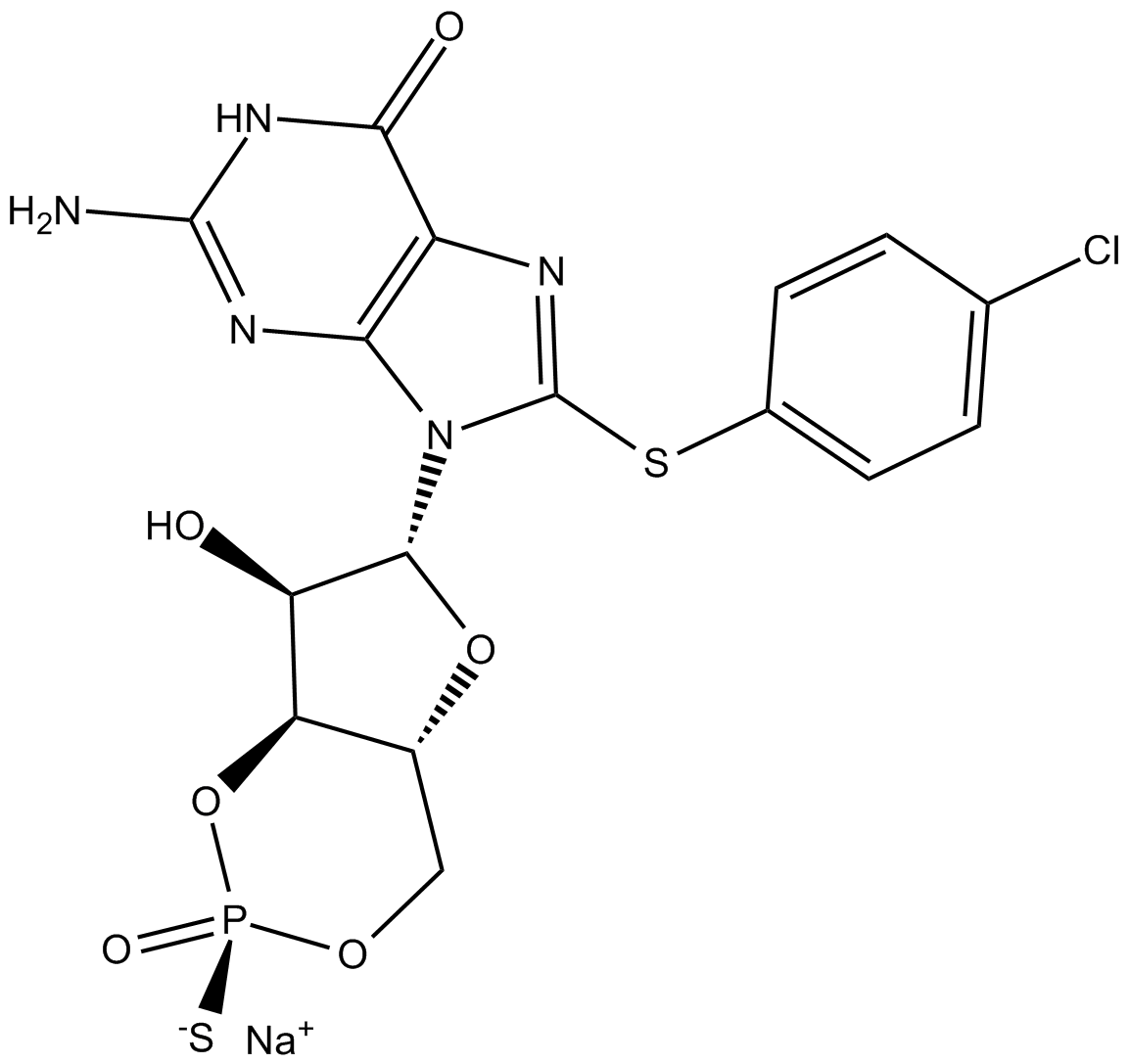Rp-8-pCPT-Cyclic GMPS (sodium salt) (Synonyms: Rp-8-pCPT-cGMPS) |
| Catalog No.GC10706 |
GMP-dependent protein kinases (cGKs) inhibitor
Products are for research use only. Not for human use. We do not sell to patients.

Cas No.: 208445-07-2
Sample solution is provided at 25 µL, 10mM.
IC50: 18.3 and 0.16 μM for cGK Iα and cGK II, respectively.
Rp-8-pCPT-Cyclic GMPS is a GMP-dependent protein kinases (cGKs) inhibitor.
Appreciation of cGMP as a distinct intracellular second messenger is reported to be closely followed by an intensive search for effector proteins in various organisms. A cGMP-dependent protein kinase (cGK) has been found in arthropods resulting in the eventual isolation of cGK from mammalian tissues.
In vitro: Previous study found that Rp-8-pCPT-Cyclic GMPS could selectively inhibit cGK activity in intact human platelets. The IC50 value of Rp-8-pCPT-Cyclic GMPS for cGK II was 114-fold lower than that for cGK Iα in the presence of 1 mM cGMP. In the presence of 10 mM cGMP, the IC50 values of Rp-8-pCPT-Cyclic GMPS for cGK Iα and cGK II increased 3- and 11-fold, respectively. In addition, millimolar concentrations of Rp-8-pCPT-Cyclic GMPS could fully activate both enzymes, a phenomenon that was observed previously for cGK II. Because substitutions at the 8-position of the guanine ring are poorly tolerated by cGK Ib, these results suggested that the Rp-isomer of 8-pCPT-cGMPS might be a selective activator or inhibitor, respectively, of cGK II compared to the cGK I isoforms [1].
In vivo: Up to now, there is no animal in vivo study reported.
Clinical trial: So far, no clinical study has been conducted.
Reference:
[1] Gamm, D. M.,Francis, S.H.,Angelotti, T.P., et al. The type II isoform of cGMP-dependent protein kinase is dimeric and possesses regulatory and catalytic properties distinct from the type I isoforms. The Journal of Biological Chemisty 270(45), 27380-27388 (1995).
Average Rating: 5 (Based on Reviews and 26 reference(s) in Google Scholar.)
GLPBIO products are for RESEARCH USE ONLY. Please make sure your review or question is research based.
Required fields are marked with *




















